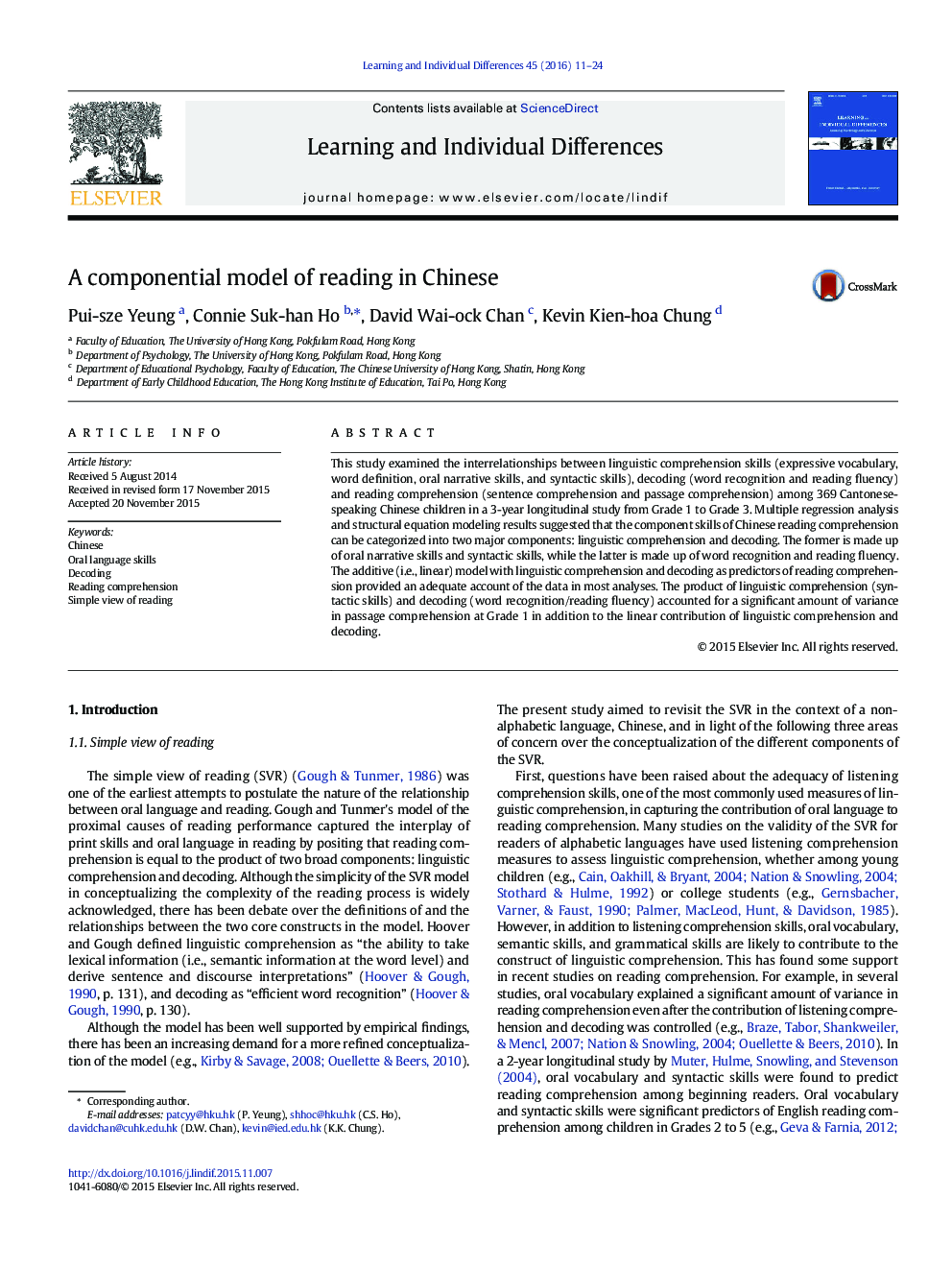| Article ID | Journal | Published Year | Pages | File Type |
|---|---|---|---|---|
| 364498 | Learning and Individual Differences | 2016 | 14 Pages |
•A 3-year longitudinal study among 369 Cantonese-speaking Chinese children•Based on Simple View of Reading, a model of Reading in Chinese was proposed.•Decoding consists of word recognition and reading fluency.•Linguistic comprehension comprises oral narrative skills and syntactic skills.•The linear model fit the data better than the multiplicative model.
This study examined the interrelationships between linguistic comprehension skills (expressive vocabulary, word definition, oral narrative skills, and syntactic skills), decoding (word recognition and reading fluency) and reading comprehension (sentence comprehension and passage comprehension) among 369 Cantonese-speaking Chinese children in a 3-year longitudinal study from Grade 1 to Grade 3. Multiple regression analysis and structural equation modeling results suggested that the component skills of Chinese reading comprehension can be categorized into two major components: linguistic comprehension and decoding. The former is made up of oral narrative skills and syntactic skills, while the latter is made up of word recognition and reading fluency. The additive (i.e., linear) model with linguistic comprehension and decoding as predictors of reading comprehension provided an adequate account of the data in most analyses. The product of linguistic comprehension (syntactic skills) and decoding (word recognition/reading fluency) accounted for a significant amount of variance in passage comprehension at Grade 1 in addition to the linear contribution of linguistic comprehension and decoding.
